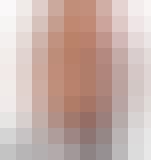Arduino senses the environment by receiving inputs from add-on devices such as sensors, and can control the world around it by adjusting lights, motors, and other actuators. In this class you will learn how and when to use the different types of sensors and how to connect them to the Arduino. Since the external world uses continuous or analog signals and the hardware is digital you will learn how these signals are converted back-and-forth and how this must be considered as you program your device. You'll also learn about the use of Arduino-specific shields and the shields software libraries to interface with the real world. Please note that this course does not include discussion forums.
Lecture 1.1 - Arduino Shields

Reviews
4.7 (3,863 ratings)
- 5 stars74.86%
- 4 stars20.32%
- 3 stars3.36%
- 2 stars0.77%
- 1 star0.67%
AP
Jan 25, 2016
Great course! You will learn much on Arduino projects and Arduino Shields.
This course earns my highest recommendations and is ideal for someone who wants to learn more on IoT.
RK
Jun 7, 2017
If you are new or eager to learn about the Arduino, this course bring you up to speed. Though I played with Arduino little bit before this class, this class put me in right path.
From the lesson
Module 4
In this module we’ll examine Arduino shields and how they are used to extend the capabilities of an Arduino-based system. Shields are printed circuit boards that are stacked on top of the Arduino together with libraries that enable the new hardware to be used through an Arduino sketch. We’ll describe the benefits of shields and their basic construction as well as the use of libraries in interfacing with each shield. This module also describes how to connect your IoT device to the Internet using shields. We focus on an Ethernet shield in order to establish a wired network connection, and a WiFi shield to establish a wireless connection.
Taught By

Ian Harris
Professor
